If you’re hunting for DIY wood project ideas that are actually fun to build, beginner-friendly, and don’t require a full-blown cabinet shop, you’re in the right place. I’ve put together a collection of simple projects you can knock out in a weekend, using basic tools and budget-friendly lumber—perfect for new woodworkers or anyone who wants to add something useful (and handmade) to their home.
Whether you’re looking to sell small crafts, level up your skills, or just want a relaxing build after a long week, these ideas will give you plenty of inspiration to get sawdust flying.

Essential Tools That Make Any Wood Project Easier
Before you dive into the project ideas below, here are a few beginner-friendly tools that make every woodworking project smoother, cleaner, and way more enjoyable.
These are the exact same essentials I reach for in my own shop every single week —
simple, affordable, and perfect for any DIY wood project on this page.
🌟 Amazon Product Suggestion:
✔️ IRWIN QUICK-GRIP 6” One-Handed Mini Bar Clamp Set
(4-Pack)
These IRWIN Quick-Grip clamps are my go-to shop workhorses. Light, fast, and truly one-handed, these clamps are perfect for small builds like display cases, shelves, frames, and trim. Even with their compact size, they deliver solid pressure, lock cleanly, release smooth, and won’t dent your walnut thanks to the non-marring pads. If you want clamps you’ll actually enjoy using — these are the ones.
Why it’s great:
✓ One-handed operation makes positioning and clamping effortless
✓ Strong, consistent grip for small cabinet and display case builds
✓ Soft, non-marring pads protect delicate woods like walnut and cherry
✓ Lightweight design lets you run several clamps at once without fatigue
✓ Perfect for tight spots where full-size bar clamps won’t fit
✓ Extremely reliable — no slipping, no bending, no cheap-plastic flex
✓ Great for beginners and pros who want fast, frustration-free clamping
🌟 Amazon Product Suggestion:
✔️ Gorilla Wood Glue – 8 oz Bottle
(Natural Wood Color)
When you’re building a walnut display case — or anything that needs to stay together longer than you will — Gorilla Wood Glue is the stuff you reach for without thinking twice.
It’s strong, it’s predictable, it dries the right color, and it just works. Perfect for joints, edge-gluing panels, shelves, frames, and any woodworking project where reliability isn’t optional.
Why it’s great:
✓ Super strong bond — clamps up tight and holds like a tank
✓ Dries natural wood color — blends beautifully with walnut, oak, cherry, and maple
✓ Fast set time — ideal for small builds, cabinetry, trim, and furniture work
✓ Water-resistant formula — great for long-lasting, indoor woodworking projects
✓ Easy squeeze bottle — clean, controlled application with zero mess
🌟 Amazon Product Suggestion:
✔️ SKIL 5” Random Orbital Sander
(with Cyclonic Dust Box)
This SKIL 5” random-orbital sander is a killer little powerhouse — perfect for smoothing out your walnut display case, taking down glue squeeze-out, or prepping panels before finishing.
It’s compact, strong, and stupid-easy to control.
The built-in cyclonic dust box actually works (rare for budget sanders),
keeping the air cleaner while you work.
Why it’s great:
✓ Random-orbit finish for smooth, swirl-free sanding
✓ Cyclonic dust box that actually traps dust
✓ Comfortable grip for long sanding sessions
✓ Variable speed for precise control on any wood
✓ Low vibration for accuracy and less fatigue
🧰 Beginner-Friendly Wood Projects
These simple builds are perfect for new woodworkers who want quick wins without complicated tools or techniques.
If you’re just getting started, this section is where to begin.
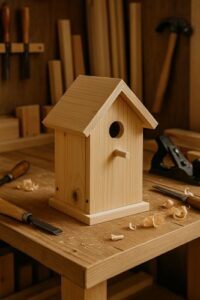
1. Build Your First Birdhouse
A perfect starter project with simple cuts and easy assembly. Great for learning the basics of measuring, drilling, and sanding.
👉 Build it here: Build Your First Birdhouse
2. Miniature Birdhouse
A fun, tiny project that uses scrap wood and teaches precision and attention to detail.
👉 Build it here: Miniature Birdhouse
3. Simple Wooden Step Stool
Quick, sturdy, and useful around the house — perfect for beginners learning to join panels and cut clean edges.
👉 Build it here: Simple Wooden Step Stool
4. Kids Wooden Stool
A beginner-friendly project that teaches stability and structure while creating something practical for your home.
👉 Build it here: Kids Wooden Stool
5. DIY Wooden Toolbox
A classic woodworking project that introduces drilling, assembling, and adding a handle.
👉 Build it here: DIY Wooden Toolbox
6. DIY Storage Crate With Handles
Straight cuts, simple box joints, and a super practical result. Perfect for organizing the shop or home.
👉 Build it here: DIY Storage Crate With Handles
7. Simple Wooden Picture Frame
A fast, rewarding project that uses minimal tools and teaches miter cuts and clean sanding.
👉 Build it here: Wooden Picture Frame
8. Build a Simple Bookshelf
A confidence-building project for beginners ready to take on something slightly larger.
👉 Build it here: Simple Bookshelf
⚡ Quick & Easy Weekend Builds
Short on time?
These small projects can be knocked out in a single afternoon or weekend.
Simple cuts, easy assembly, and big satisfaction.

1. How to Make a Wooden Cutting Board
Beginner-friendly, functional, and one of the best projects for practicing sanding and wood finishing.
👉 Build it here: How to Make a Wooden Cutting Board
2. How to Make a Jewelry Box
A simple small box build that teaches measuring, clamping, and clean lid fitting.
👉 Build it here: How to Make a Jewelry Box
3. DIY Wooden Wall Art Projects
Creative, scrap-friendly builds that let you experiment with layout, grain, and color.
👉 Build it here: DIY Wooden Wall Art Projects for Beginners
4. Building a Wood Planter Box
A perfect weekend project for beginners that uses simple cuts and outdoor-friendly assembly.
👉 Build it here: Building a Wood Planter Box
5. How to Make Simple Wooden Toys
Easy, creative, kid-friendly builds that require only basic tools and imagination.
👉 Build it here: How to Make Simple Wooden Toys
🪑 Furniture Projects
Ready for something more substantial?
These furniture builds are great confidence boosters and produce pieces you’ll actually use in your home or shop.
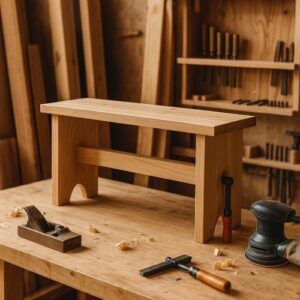
1. Wooden Bench – Traditional Version
A solid, practical build that teaches stability, support structure, and finishing.
👉 Build it here: How to Make a Wooden Bench
2. Wooden Bench – Updated Version
A cleaner, modern guide to building a strong and attractive bench for indoor or outdoor use.
👉 Build it here: Wooden Bench
3. Rustic Coffee Table
A great intro furniture project that focuses on panel glue-ups, legs, and finishing techniques.
👉 Build it here: Rustic Coffee Table
4. Wooden Rocking Chair
A rewarding intermediate project that teaches curved cuts, joinery, and smooth finishing.
👉 Build it here: Wooden Rocking Chair
5. How to Make a Wooden Table
A straightforward and functional build that covers legs, aprons, and top assembly.
👉 Build it here: How to Make a Wooden Table
6. Outdoor Wood Furniture
A collection of simple outdoor builds designed for durability and easy construction.
👉 Build it here: Outdoor Wood Furniture
🌟 Decor, Unique & Specialty Projects
These standout builds add personality to your home or yard.
Fun, creative projects that teach unique cuts and techniques you won’t get from standard builds.

1. Wooden Mailbox
A functional outdoor build that teaches panel construction and weather-resistant finishing.
👉 Build it here: Build a Wooden Mailbox
2. Wooden Windmill
A beautiful decorative outdoor project that introduces angled cuts and assembly.
👉 Build it here: Wooden Windmill
3. How to Make a Wooden Whirligig
A fun, eye-catching kinetic project with simple shaping and assembly.
👉 Build it here: Whirligig
4. DIY Display Case
A great small-furniture project that teaches miter cuts, shelving, and panel assembly.
👉 Build it here: DIY Display Case
5. Custom Wood Accent Wall
Simple layout, clean lines, and a massive visual upgrade for any room.
👉 Build it here: Custom Wood Accent Wall
6. How to Build a Wooden Boat
A unique build that teaches curvature, panel shaping, and waterproof finishing.
👉 Build it here: How to Build a Wooden Boat
Final Thoughts…
If you’ve been wanting a list of DIY wood project ideas that are actually fun to build — not overwhelming, not complicated, just solid woodworking projects anyone can tackle — this page should keep you busy for a long time. Every project here can be built with basic tools, a little patience, and a handful of boards.
The biggest step in woodworking is the first cut. Pick a project, grab your clamps and glue, and start making sawdust. You don’t need a fancy workshop. You don’t need expensive tools. You just need to begin.
When you’re ready for even more ideas, my
👉 Easy Woodworking Projects and
👉 Woodworking Projects Guide
pages are great places to explore next.
Now get out there and build something awesome.
Craft it. Shape it. Own it!
And as always — enjoy the process, enjoy the sawdust, and keep creating things you’re proud of.
🔧 Need More Plans?
👉👉 Click here to learn more about Ted’s Woodworking Plans:
If you want access to hundreds of additional woodworking projects and detailed tutorials, check out my full review of Ted’s Woodworking Plans.
It’s packed with step-by-step builds that are perfect for weekend projects.
💡 Turn Your Woodworking Passion Into Income
👉👉 Click here to learn more about Wealthy Affiliate
SawdustSmarty.com started as a small hobby — and grew because I finally learned how to build a real website.
If you’ve ever thought about turning woodworking into a side business or income stream, the training at Wealthy Affiliate is hands-down what I recommend.

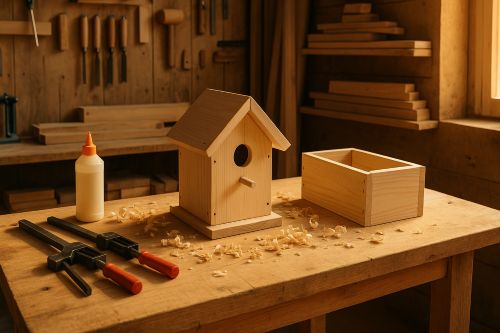
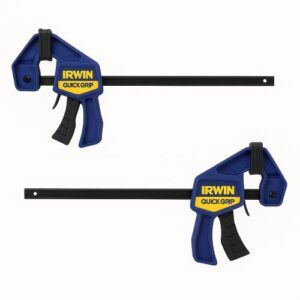
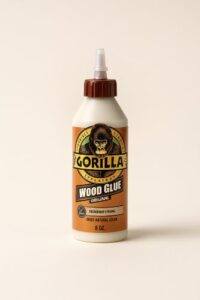
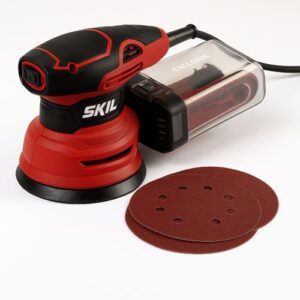


Loved this roundup—DIY wood projects are such a rewarding way to get creative and build something useful at the same time. I appreciated how you included a variety of ideas that range from practical to decorative, which makes it great for both beginners and more experienced woodworkers.
In my own experience, starting with smaller projects like shelves and planter boxes helped me build confidence and get familiar with tools before moving on to more complex builds. It’s amazing how even a simple project can transform a space or make a thoughtful gift.
One question I had: do you have a favorite go-to wood type for beginner projects that’s both affordable and easy to work with? I’ve used pine mostly, but I’m curious if there’s something better in terms of durability and finish.
In my opinion, having a list like this really helps break the creative block and gets the sawdust flying. Thanks for the inspiration—can’t wait to try a few of these out!
Thank you for your response, Tommy Potter… In my own experience, I have had complex projects go together smoothly and I have had smaller projects make me want to pull my hair out. Each piece of wood I work with has its own characteristics. Whether it’s the density of the wood or the pattern of the woodgrain, each piece is unique. I have worked with many types of different woods, and the bottom line is, personal preference. What do you want your project to look like in the end? Do you want it to have a rustic look, or would you prefer it to have a smooth, shiny, tabletop finish like a piece of furniture? My suggestion for someone that is just starting out would be to use a softer wood like pine or poplar for its affordability and it is easy to work with… Plus, with the many stains and finishes available on the market, your project could end up looking like a masterpiece!
Thanks again,
Wayne McComic